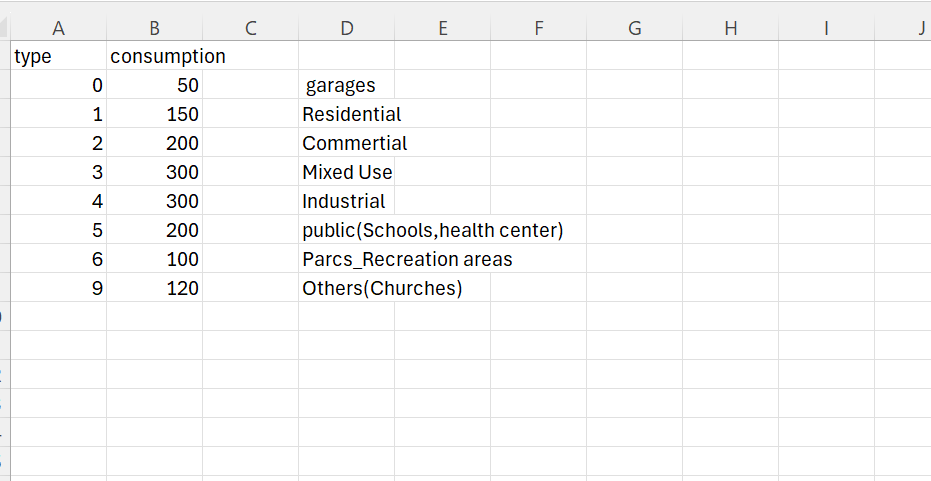Hello there!
I do have trouble understanding how the urban cooling valuation model concerning the Energy_Consumption works and what exactly the input should be.
The input needed is energy consumption per building type, in kW/degC.
I get that in order to come to a value that has the unit of kW/deg_C , you first go look into the Santamouris & al. paper in order to find out the plus in electricity need per plus of degree celsius ambient temperature for your region of interest.
Let’s say that would be a plus of 10%.
Now that we know the plus in energy need, we need the energy consumption per building type.
So first of all, I am wondering why the documentation says kW and not kWh? Considering kW is power while kWh is energy?
Now, altough it is possible to find data about average energy need per building type at least for some types (such as residential), it is quite imprecise and really hard to find when it comes to industry, where floor space varies greatly, so how can we just have one single number for all the buildings of a giant category such as f.ex. industry? So I suppose kWh/m^2/building type is the most sensible input? But then again, the calculation would be missing every floor space that is not ground floor, considering it only works with the footprint…
Anyway, let’s suppose now that residential buildings use 200 kWh/m^2 and industry uses 300 kWh/m^2.
Would this be what the type and consumption columns should look like?
Type____________ Consumption
Residential_______ 0.1x200 kWh/deg_C
Industry_________0.1x300 kWh/deg_C
Or am I totally miss understanding something?
As I do understand that the model calculates energy use per building on a pixel basis (Therefore needs a precise footprint shp. file) but I am not sure if the input should be energy use per square meter, or something different, as it is never really specified in the documentation.
Thank you for your help.


